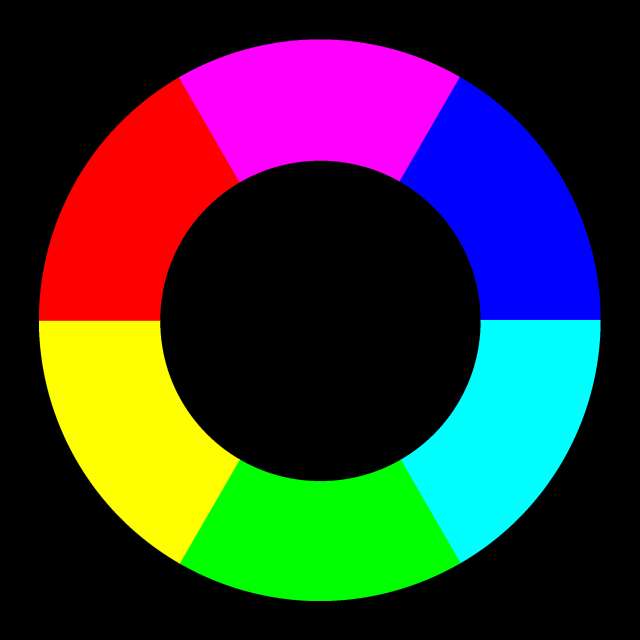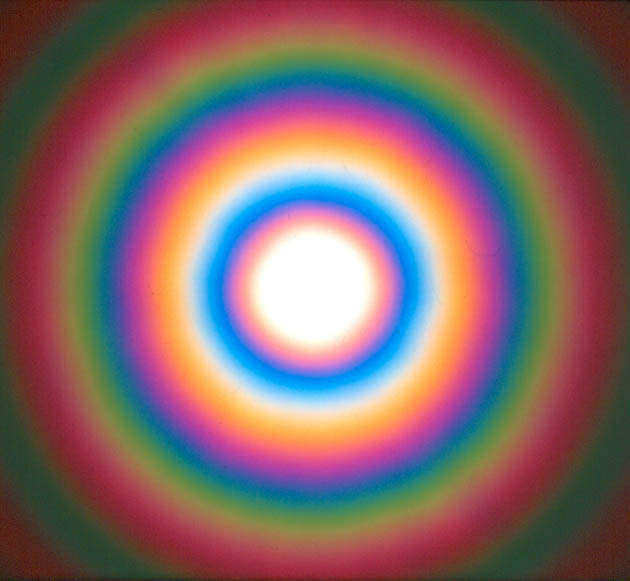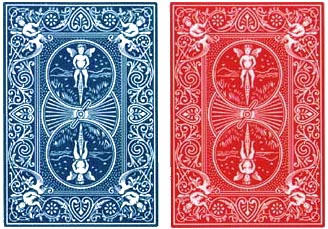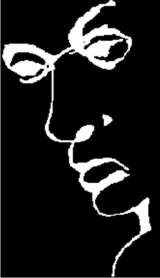Patent & publication research, security audits.
Courses on holography, document & product security, theory of colours.
Color Theory and other vision aspects
True Color Theory ©
I wrote this introductory treatise on color theory as a response to the many erroneous representations that I found on the Internet. In particular the frequently expressed notion that the primary subtractive colors are red, yellow and blue disturbs me. It must be acknowledged that the subtractive primary colours are yellow, magenta and cyan, while the additive primary colours are red, green and blue(violet).
This treatise has been expanded and updated on December 8, 2006.
Download: TRUE COLOUR THEORY.pdf
Natural and artificial auras ©
Auras and glories can be observed when monodisperse particle distributions are involved, either in reflection (glories) or in transmission (auras). Such particle distributions consist of microscopical atmospheric water droplets, pollen or algae. Auras and glories in nature, in the laboratory and in art are presented.
If you find this interesting, you may certainly wish to visit the site on atmospheric optics.
Download: Aura.pps
The difference between illusive perception and insight
Speaking of colours, I'd like to draw your attention to the amazing color changing card trick, presented on YouTube: http://www.youtube.com/watch?v=voAntzB7EwE.
I find this performance an illustrative example of the difference between only knowing what you see in amazement, and understanding the rational physics behind the percieved phenomena. Admiration then takes the place of amazement.
This is what science is about: unravel the amazing phenomena and find their lawful and admirable explanations. We tend to initially see only a minute slice of reality and only perseverant scientific research will reveal the truth.
I am proud to quote our famous scholar Simon Stevin (1548-1620), who stated: "Wonder en is gheen Wonder" or in plain English: "The miracle is not a miracle."
Optical Illusions
And, speaking of "illusive perception" ...
A collection of optical illusions, some really astonishing is available here for download.
The picture to the left shows a face, but it is also a word...
Again, this is what science is about: unravel the perplexing phenomena and find their lawful and admirable explanations. We may not yet be able to fully explain the illusions that we perceive, but perseverant efforts undoubtedly will. The history of science leaves no doubt...
I am unaware of the source of this collection and would appreciate source information.
Download: Optical illusions.pps
Face it: a picture speaks a thousand words
But what words? The following slide series was sent to me by a business relation with whom I share the love for ambiguous images. These images are beautiful examples of our brains being able to continually switch between fully different connotations of an image.
Again, there is a paramount difference between illusive perception and understanding the source of the illusion.
This is what science is about.
The source of this presentation is unknown to me and I would appreciate source information. The images appear to be of the Mexican artist Octavio Ocampo who refers to his style as "metamorphic".
Download: Face it.pps




